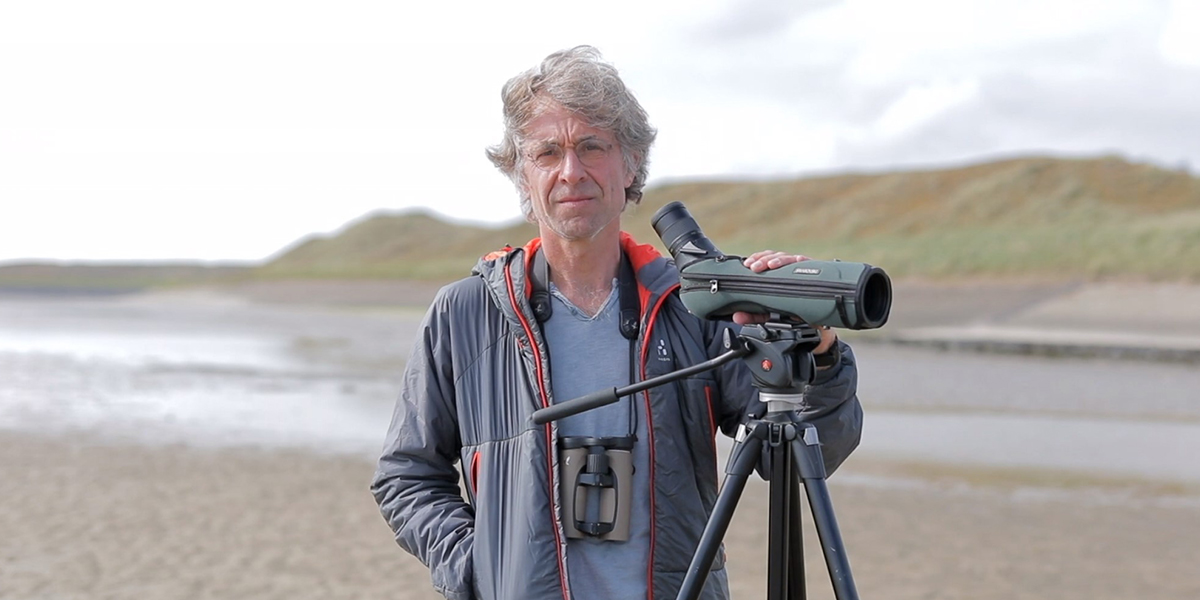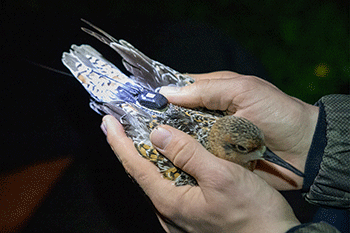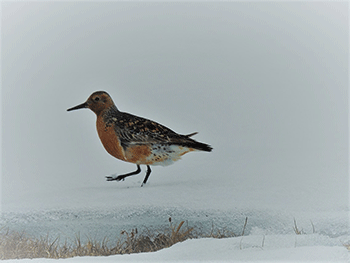Jan van Gils appointed honorary professor Global Change Ecology of Migrant Shorebirds
Jan van Gils is appointed as honorary professor of Global Change Ecology of Migrant Shorebirds at the University of Groningen. As an ecologist, Van Gils (NIOZ and UG) investigates shorebirds, with a particular focus on the red knot, which breeds in the Arctic and migrates through the Netherlands to its winter quarters in West Africa. Van Gils: ‘In effect, the red knot is like a canary in a global coal mine. Just like the miner’s canaries in the past warned for impending high concentrations of mine gases, the red knot informs us about the state of the climate and its effects on organisms.’

Van Gils is fascinated by the way migratory birds embody global connections. Van Gils: ‘Migratory shorebirds connect the far North with our Wadden Sea, with Africa, and ultimately with our entire planet.’ Too often research is focussed on small areas and seemingly isolated topics. Van Gils is motivated to teach students and future researchers that ecosystems are not independent systems and that migratory birds expose their worldwide connection. Van Gils: ‘The birds play an intricate role in connecting terrestrial to marine ecosystems on a global scale, and the research contributes to evidence-based conservation of coastal shorebirds in our rapidly changing world.’
Along the flyway

The ecologist emphasizes the importance of not only teaching Global Change Ecology at the University in Groningen, and at the NIOZ research facilities on Texel, but also along the flyway involving both local students and students from UG/NIOZ. He expects that new, technological breakthroughs will provide this next generation with research opportunities that we can now only dream about. ‘Satellite tags that we currently use to track birds on their migration will become even smaller and “smarter”. In addition to revealing the precise locations of the birds, they will give us clues about their behaviour’.
Evolution in action

Technology supports this research, but it can’t replace the importance of hands-on fieldwork and observation. Van Gils: ‘It is important that biologists continue to ‘get their feet wet’’. The research at the University of Groningen will focus on a better fundamental understanding of how food abundance affects individuals and populations of shorebirds on local and global scales. Van Gils: ‘Over the past 40 years, we have seen red knots gradually become smaller as a response to climate change. Nevertheless, the birds with the highest chance of survival on their West-African winter grounds are those that, despite their shrunken body, still have a relatively long beak. Here, we see evolution in action, and that is fascinating.’
More news
-
15 September 2025
Successful visit to the UG by Rector of Institut Teknologi Bandung
